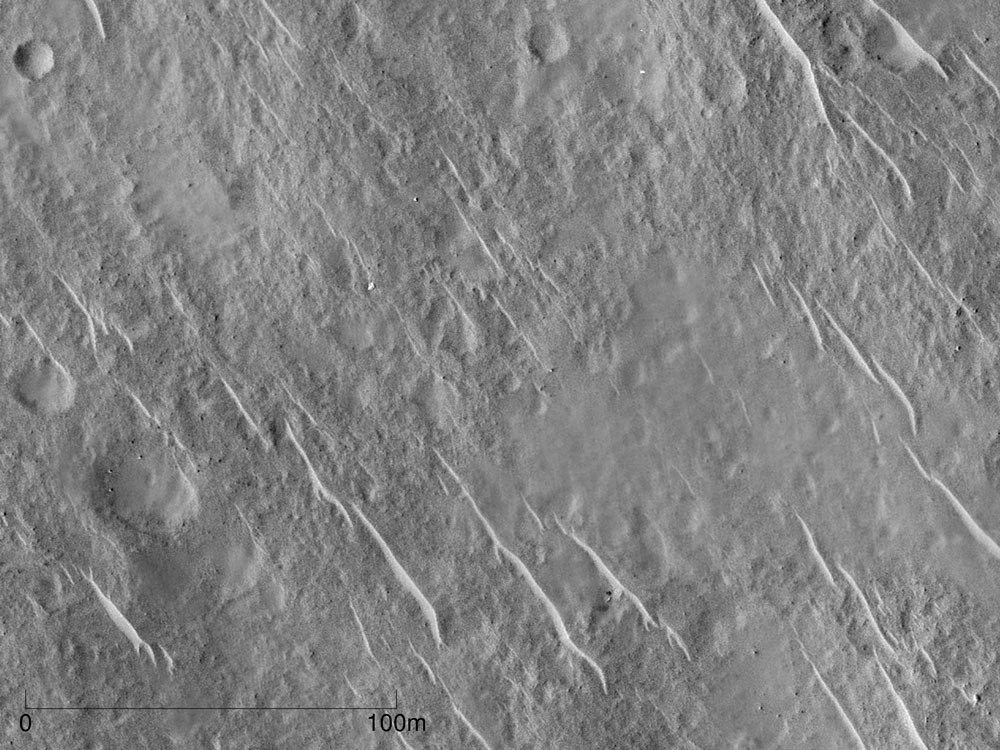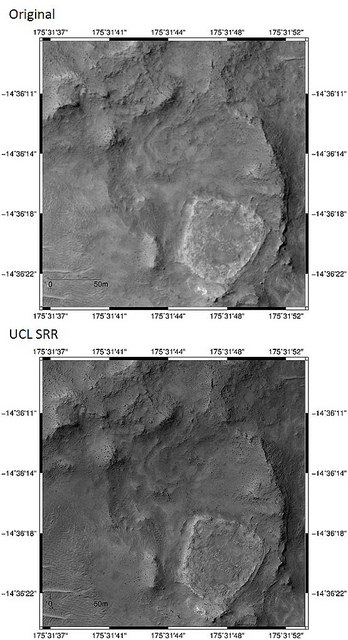We can now see 2-inch objects on Mars with this new imaging technique
University College London scientists have discovered a new image stacking and matching technique that makes it possible for Earth-bound residents to see objects that are just about 2 inches on Mars.
The UCL researchers stacked and matched images taken from orbit to reveal objects at a resolution up to five times greater than previously achieve, resulting in images of the Beagle-2 lander, ancient lakebeds, and rover tracks that were previously unattainable.

The technique, called Super-Resolution Restoration (SRR), has been used to focus on specific objects on Mars, but the technique could also be used to search for other artifacts from past failed landings as well as identify safe landing locations for future rover missions. It will even allow scientists to explore more area than is possible with a single rover.
“We now have the equivalent of drone-eye vision anywhere on the surface of Mars where there are enough clear repeat pictures. It allows us to see objects in much sharper focus from orbit than ever before and the picture quality is comparable to that obtained from landers,” said Professor Jan-Peter Muller from the UCL Mullard Space Science Laboratory. “This will be a game-changer and the start of a new era in planetary exploration.”
Even the largest telescopes launched into orbit have to deal with limited vision of a planet’s surface as a result of mass constraints. For cameras orbiting Earth and Mars, the resolution limit today is around 25 cm, or about 10 inches.

However, by stacking and matching pictures of the same area taken from different angles, Super-Resolution Restoration (SRR) allows objects as small as 5 cm, or about 2 inches to be seen from the same 25 cm telescope.
The UCL team applied the technique to stacks 25 cm images of the Mars captured with the NASA HiRISE camera to achieve the 5 cm target resolution.
“Using novel machine vision methods, information from lower resolution images can be extracted to estimate the best possible true scene. This technique has huge potential to improve our knowledge of a planet’s surface from multiple remotely sensed images. In the future, we will be able to recreate rover-scale images anywhere on the surface of Mars and other planets from repeat image stacks” said Yu Tao, Research Associate at UCL and lead author of the paper.
The scientists plan to explore other areas of Mars using the technique to see what else they find.
Story via University College London.


Comments are closed, but trackbacks and pingbacks are open.